Lobelia ampelnaya: growing from seeds and tips for care
Lobelia ampelous Is an annual plant with incredibly beautiful bright blue flowers that can decorate any area or balcony. It will be easy to grow, and its beautiful bloom will turn it into one of the attractions of your home garden.
Content:
- Lobelia ampelnaya: description of the plant
- Growing lobelia with seeds
- Care Tips
- Varieties and types of lobelia
Lobelia ampelnaya: description of the plant
Lobelia belongs to the Kolokolchikov family. Flowers are small blue, light blue, rarely purple. They remind bells, and not in vain. The color of the lobelia is limited. On rare occasions, white or yellow buds can be found, but there is no red lobelia. Therefore, you do not need to believe sellers who convince that this is not the case.
Features of the plant:
- The flower can reach a height of half a meter.
- It blooms magnificently and for a long time, the flowers completely cover the entire bush, it looks very bright and beautiful.
- The leaves are small, oblong.
- During flowering, they are almost invisible under the flower carpet.
- Flowering lasts a long time: from May to September.
It is not known for certain where it was brought from lobelia... Its homeland can be considered Africa or North America. In the West, lobelia has long been very popular, but here it is just beginning to take root, however, it has already aroused considerable interest among gardeners with its rare blue flowers.
The word "ampelous" was added for a reason. This means that lobelia is ideal for growing in vertical flower beds, hanging pots and vases (ampel - German "hanging vase").
Lobelia can be used to decorate gardens, flower beds, balconies, doorways, gazebos.
There is no more beautiful and long-blooming flower than ampelous lobelia, growing from seed does not require much strength, but a delicate flower needs some care.
Lobelia is not only beautiful, but also useful. It has already been proven that the leaves and flowers contain a large amount of nutrients that help relieve inflammation. It is actively used for diseases of the heart, lungs, sunstroke, poisoning, epilepsy and even newborn asphyxia. In addition, lobelia allows you to cleanse the body of toxins. There is a drug Lobesil based on lobelia, which allows you to cope with nicotine addiction.
In folk medicine, Lyubelia is used for the preparation of alcoholic tinctures. However, you cannot drink it as tea, it is a medicine that can be harmful if the dosage is exceeded, since lobelia remains a poisonous plant. In case of an overdose, nausea, vomiting, abdominal pain, and even respiratory arrest are possible. Lobelia can raise blood pressure, so people who already have high blood pressure are not recommended to take medications based on this plant.
Growing lobelia with seeds
The hardest part of growing lobelia is seedling... Most failures befall gardeners even before the lobelia is planted. in open ground... Even if you do not need to transplant the flower, it is intended for the balcony, you cannot take it out directly into the fresh air. Seedlings should grow indoors.
Growing conditions:
- Plant the seeds can be in separate containers or immediately in a pot, in which the lobelia will grow.You can use jars and small cups, large capacity lobelia does not require.
- The seeds are very small, so they cannot be deeply deepened into the ground. Seeds are sown on the surface, without sprinkling soil on top.
- If planting goes into boxes, you can use a toothpick. Since small seeds are difficult to take with your hands, a toothpick is moistened with water, dipped in the seeds, and then shallowly into the ground.
- Another convenient seeding method. Add a little soil to the seed bag, mix gently with a toothpick and scatter evenly over the surface of the soil box.
- After the seeds planted, the box must be covered with plastic wrap. In this regard, trays are convenient, and not individual cups.
- You cannot keep the seedlings under the film all the time, you need to air it regularly, remove the film every day for half an hour and remove condensation so that mold does not appear.
- The temperature should be 18-20 degrees. This is optimal for germination. The first shoots will hatch in 10-14 days.
- Watering fragile seedlings must be very careful. At first, it is so weak that it can be washed off with water. Experienced gardeners recommend using a pan of water or moistening the soil with a conventional medical syringe and needle or spray bottle.
- If there is not enough light, it is necessary to illuminate seedlings with fluorescent lamps.
- 2 weeks after germination, the soil must be fertilized.
When the lobelia grows up and gets stronger, the first 2-3 true leaves will appear on each sprout, it can be planted in permanent places. After transplanting, individual seedlings begin to grow actively. They need to be looked after, to monitor the lighting and soil moisture.
Lobelia loves warmth, so it is planted only after the frost stops.
If you want to get a large number of bright flowers in a flower bed, you need to plant the seedlings thicker.
Care Tips
Gardeners differ on how whimsical or unpretentious lobelia... Some say that leaving is very painstaking, while others convince the opposite.
With strong seedlings and proper planting, it is likely that the lobelia will bloom for a long time and abundantly, but the basic rules of care must be followed.
A few tips for caring for your love:
- Even before planting, the lobelia needs to be pinched. So it will branch out better and grow thicker.
- Watering requires moderation. Drying of the soil and the formation of a crust should not be allowed, but excess moisture is also destructive. The soil should always be slightly damp. This is especially important in the July heat. Dry plants quickly stop blooming.
- Lobelia needs to be fed, but too frequent feeding slows down flowering. Before the onset of the flowering period, two top dressing... When the lobelia has bloomed, you can fertilize it with potassium sulfate.
- You can extend the flowering of the plant until the very frost. When you notice that the plant is fading and seeds are forming, cut the bush, leaving only 5 cm above the ground and fertilize the soil. Lobelia will start branching and bloom again in a couple of weeks.
- Flowering can last a long time without pruning by removing drooping flowers and pruning the plant regularly.
- You need to plant lobelia only in a sunny place. Without enough light, flowering will be scarce. But with all this, Lobelia does not like heat. Therefore, the sun should be interspersed with shadow.
- If the lobelia is planted in a flowerpot or vase on the balcony, you will have to water it twice a day, in the morning and in the evening. City air dries the soil faster, besides, dark colored vases heat up faster and the soil dries up.
- You can try saving a flowering plant for the winter. For this you need transplant lobelia in a pot and leave in the apartment. If this succeeds, the plant will bloom until December. In the spring, the bush is simply divided and planted again in the ground. In this way, seed problems can be avoided.
- You can harvest lobelia seeds without buying them. To do this, you need to give the plant to bloom.Then flowers with formed seeds ripped off and shaken over the paper. The seeds are small, so they need to be sieved and then stored until spring.
- Lobelia grows best on loose, fertile soil, in which there is no fresh manure.
Varieties and types of lobelia
There are over 300 types lobelium... They can be divided into ampelous and bush. Among the ampelous varieties, "Sapphire" and "Blooming Cascade" are especially popular.
"Sapphire" can be blue, purple, white or pink in color. It is great for front gardens and balconies. It blooms luxuriantly and for a long time. Loves warmth, light and moisture. "Blooming Cascade" differs from "Sapphire" only in shades. The care for these varieties is the same.
Popular varieties of flowers:
- Lobelia blackberry. This species can have various forms: dwarf, erect, spreading or compact. Like any lobelia, it loves light and warmth, but it will also bloom in a small shade. Does not tolerate drought and large amounts of organic fertilizers, as it begins to abundantly develop shoots to the detriment of flowering. With regular haircuts, the color is thick and long.
- Lobelia syphilitic. This blue flower was once used to treat syphilis. Now it is just a decorative flower. He loves the shadow and takes root in it well. Moisture is also important. This plant grows especially well near a reservoir, it can even tolerate slight flooding. This plant perennial, you do not need to delete it in the fall. The flowers are unusual, blue, the inflorescences look like spikelets. It grows up to a meter in height.
- Lobelia is the thinnest. This is a short annual plant, about 30 cm high.It has erect stems, it is good to plant such a lobelia in flower beds... The flowers are blue or blue. The color is short-lived, from August to October.
- Lobelia Dortman. A very rare, endangered plant, listed in the Red Book. Of course, you won't see her in gardens and on balconies. In the West, it is known as "water lobelia". The flowers are like bells, light blue or white. It grows mainly near water bodies.
- Lobelia Gherardi. The most frost-resistant species. This flower is able to survive a thirty-degree frost. Quite tall, grows more room in height.
- Lobelia is beautiful. It got its name due to its spectacular appearance. At a height of about 80 cm, the flowers are large velvet blue, the leaves are green or red.
You can try to cross varieties of Lubelia ampelous among themselves for the sake of breeding a plant with an unusual shade and type of buds. This kind of home breeding can produce very interesting results.
More information can be found in the video.



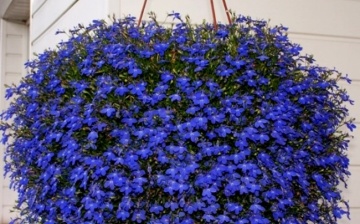
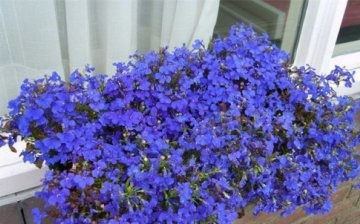
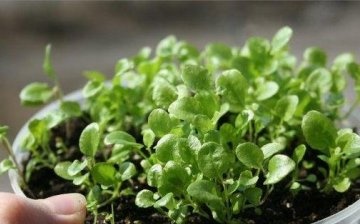
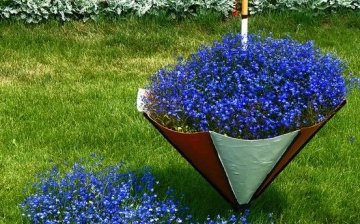
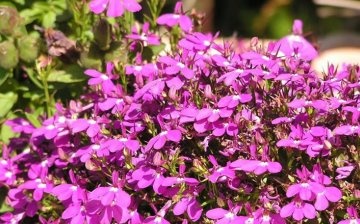





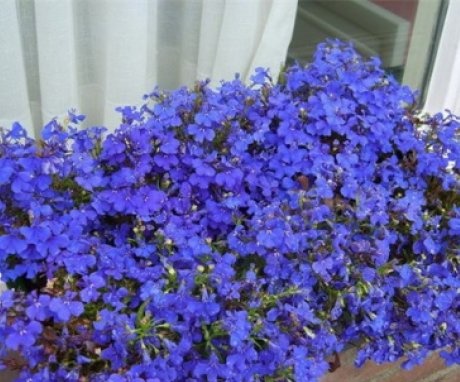
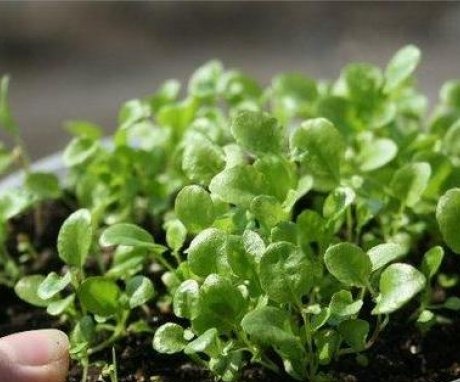
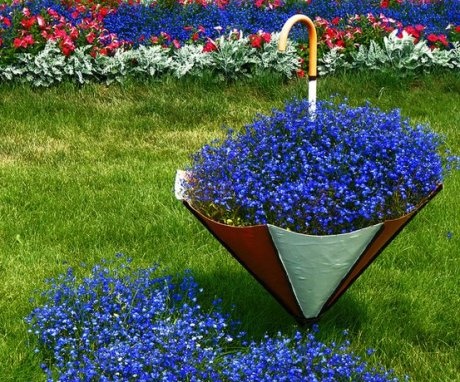
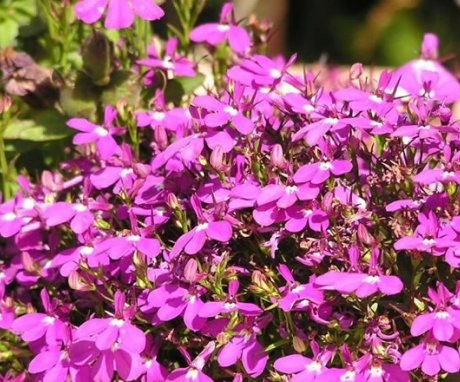
I grow Lobelia every year. Although the flower is picky enough, and requires special attention at the growing stage, the result is always amazing. I plant with a toothpick, in small bushes, so they are easier to dive in the future.